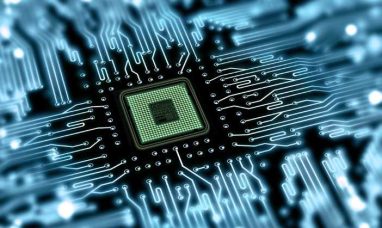You wouldn’t expect a company with an 80% market share to be down 35% YTD, yet Intuitive Surgical (NASDAQ:ISRG) is in this exact situation. The company’s market is predicted to grow at a 10% CAGR over the next ten years. A terrible quarter emphasized the fact that significant negative catalysts are starting to take hold, indicating more suffering to come.
Competitor advantage
Many people associate Intuitive with surgical robotics, but we think of it as a comprehensive ecosystem of healthcare services.
Despite having a technology advantage of 20 years, the corporation wanted to be ready in case rivals started to steal market share. In order to fight the problem, management borrowed a strategy from Apple (AAPL) and developed additional services designed to lure users in.
Its educational and data analytics apps have experienced rapid expansion, assisting hospitals in performing operations with growing efficiency. These resources make it simpler and more affordable to buy additional da Vinci systems or their brand-new Ion platform, which is a major selling factor for those goods.
Intuitive now generates 75% of its revenue from recurring sources because of new features and ongoing maintenance expenses. The Hugo system from Medtronic (NYSE:MDT) or the Ottova robot from Johnson & Johnson (NYSE:JNJ) are irrelevant to Intuitive because existing customers are likely to keep spending money on their products because switching is too expensive.
Both rivals also declared that their prices would equal those of the da Vinci machines, so management could woo surgeons by using their pricing leverage and reputation.
Customer loyalty significantly lowers the need for marketing expenses, and Intuitive is free to invest more money in R&D because there is no debt on the balance sheet.
Because of its devoted customer base and lack of debt on its balance sheet, Intuitive is free to invest more money in R&D. This greatly minimizes the requirement for marketing expenses. This year R&D as a percentage of revenue might hit an all-time high and comes as welcoming news.
However, if their moat is this large, it begs the issue of what obstacles resulted in a gloomy Q2 and a gloomy forecast. Hospitals, Intuitive’s sole customer, must be consulted in this case.
Unfavorable Catalysts
Despite the healthcare industry’s reputation as recession-proof, the badly managed privatized hospital sector causes downturns for healthcare equipment manufacturers.
We must thoroughly consider the 2010s in order to comprehend the issue more fully. With biotechs on the rise and Intuitive’s new da Vinci Xi machine debuted in 2014, medical innovation was at its height, inspiring patients to demand the best standard of care through cutting-edge, pricey therapies. Due to historically low-interest rates that were ripe for exploitation, hospitals of all sizes started taking on long-term debt to pay for treatments and surgeries in order to keep up with demand. Take a peek at the hospital system in Connecticut. Only three years after the biggest financial catastrophe in history, medical facilities in Danbury, Hartford, Norwalk, and other cities tripled their debt into the billions in FY 2011. Through the decade, this strong appetite for debt only grew and eventually took over as the main engine of growth. The financial leverage hospitals have been accumulating is finally coming to light in the macroeconomic context of today.
Because of the large levels of debt on the balance sheet and the significant slowdown in borrowing caused by rate hikes, more money must go toward paying off the debt. Any money that is not used to improve financial stability is being spent on inflated expenses. Medical supply costs have climbed by 20.6% in the last year, while drug costs have increased by 36.9%, causing negative margins in 1/3 of hospitals.
There is little room for CapEx, including Intuitive’s robotic equipment, due to these poor margins and enormous debt loads. Hospitals won’t spend $1.5M on a da Vinci system or $600K on an Ion platform, then another $200K a year on maintenance and other technology costs. This issue is developing in front of our very eyes.
The corporation revealed an unusual negative growth rate on the equipment ordered during the most recent quarter, demonstrating that 2021 was an anomaly. Due to COVID-19 interruptions and simple 2020 comps, last year’s high growth rate masked the effects of a deteriorating economic environment.
Stretched Valuation
Bullish sentiment should be subdued as the company continues to go through a necessary correction to reflect its current circumstances properly, given the upcoming headwinds on growth.
When actual profits growth is only 10%, it is roughly five times less than the market’s predicted rate of 46.8% (FWD PEG of 4.68). Its forward P/S ratio of 13, which is significantly higher than historical averages despite the prior two years’ absurdly high metrics, also indicates overvaluation. Free cash flow is anticipated to be half of last year’s level with a record-low FCF yield of 1%, which is a troubling indication of a serious slowdown in sales and profit.
Conclusion
Intuitive serves as a superb case study for showing that certain growth names, especially high-quality ones, are nevertheless experiencing sell-offs as investors’ bottom feed for growth names. However, given the company’s robust internals, it will be one to follow until the recession ends in 6 to 8 quarters.
Featured Image : Megapixl © Andreistanescu














